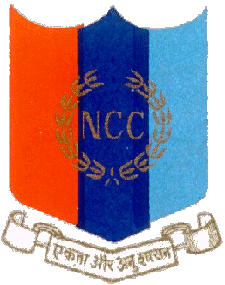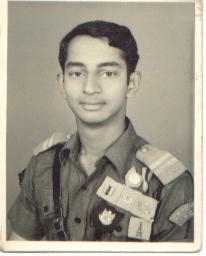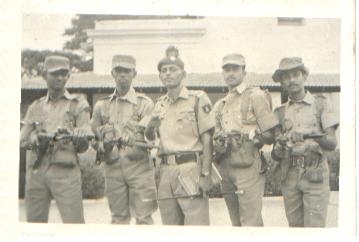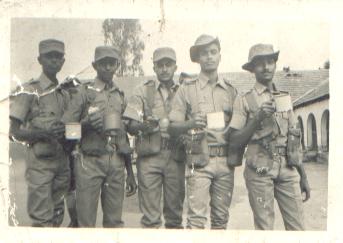ūH������geocities.com�������������������������������������������������������������������������������������������������������������������������������������������������������������������������������������������������������������������������������������������������������������������������������������������������������������������������������������������������������������������������������������������������������������������������������������������������������������������������������������������������������������������������������������������������������������������������������������������������������������������������������������������������������������������������������������������������������������������������������������������������������������������������������������������������������������������������������������������������������������������������������������������������������������������������������������������������������������������������������������������������������������������������������������������������������������������������������������������������������������������������������������������������������������������������������������������������������������������������������������������������������������������������������������������������������������������������������������������������������������������������������������������������������������������������������������������������������������������������������������������������������������������������������������������������������������������������������������������������������������������������������������������������������������������������������������������������������������������������������������������������������������������������������������������������������������������������������������������������������������������������������������������������������������������������������������������������������������������������������������������������������������������������������������������������������������������������������������������������������������������/commandervarun/ncc/ncc.html����������������������������������������������������������������������������������������������������������������������������������������������������������������������������������������������������������������������������������������������������������������������������������������������������������������������������������������������������������������������������������������������������������������������������������������������������������������������������������������������������������������������������������������������������������������������������������������������������������������������������������������������������������������������������������������������������������������������������������������������������������������������������������������������������������������������������������������������������������������������������������������������������������������������������������������������������������������������������������������������������������������������������������������������������������������������������������������������������������������������������������������������������������������������������������������������������������������������������������������������������������������������������������������������������������������������������������������������������������������������������������������������������������������������������������������������������������������������������������������������������������������������������������������������������������������������������������������������������������������������������������������������������������������������������������������������������������������������������������������������������������������������������������������������������������������������������������������������������������������������������������������������������������������������������������������������������������������������������������������������������������������������������������������������������������������������������������������������������geocities.com/commandervarun/ncc/ncc.html�delayed���������������������������������������������������������������������������������������������������������������������������������������������������������������������������������������������������������������������������������������������������������������������������������������������������������������������������������������������������������������������������������������������������������������������������������������������������������������������������������������������������������������������������������������������������������������������������������������������������������������������������������������������������������������������������������������������������������������������������������������������������������������������������������������������������������������������������������������������������������������������������������������������������������������������������������������������������������������������������������������������������������������������������������������������������������������������������������������������������������������������������������������������������������������������������������������������������������������������������������������������������������������������������������������������������������������������������������������������������������������������������������������������������������������������������������������������������������������������������������������������������������������������������������������������������������������������������������������������������������������������������������������������������������������������������������������������������������������������������������������������������������������������������������������������������������������������������������������������������������������������������������������������������������������������������������������������������������������������������������������������������������������������������������������������������������������������������������������������������������������������������������������������������������������������������������������������������������������������������������������������������������������������������������������������������������������������������������������������������������������������������������������������������������������������������������������������������������������������������������������������������������������������������������������������������������������������������������������������������������������������������������������������������������������������������������������������������������������������������������������������������������������������������������������������������������������������������������������������������������������������������������������������������������������������������������������������������������������������������������������������������������������������������������������������������������������������������������������������������������������������������������������������������������������������������������������������������������������������������������������������������������������������������������������������������������������������������������������������������������������������������������������������������������������������������������������������������������������������������������������������������������������������������������������������������������������������������������������������������������������������������������������������������������������������������������������������������������������������������������������������������������������������������������������������������������������������������������������������������������������������������������������������������������������������������������������������������������������������������������������������������������������������������������������������������������������������������������������������������������������������������������������������������������������������������������������������������������������������������������������������������������������������������������������������������������������������������������������������������������������������������������������������������������������������������������������������������������������������������������������������������������������������������������������������������������������������������������������������������������������������������������������������������������������������������������������������������������������������������������������������������������������������������������������������������������������������������������������������������������������������������������������������������������������������������������������������������������������������������������������������������������������������������������������������������������������������������������������������������������������������������������������������������������������������������������������������������������������������������������������������������������������������������������������������������������������������������������������������������������������������������������������������������������������������������������������������������������������������������������������������������������������������������������������������������������������������������������������������������������������������������������������������������������������������������������������������������������������������������������������������������������������������������������������������������������������������������������������������������������������������������������������������������������������������������������������������������������������������������������������������������������������������������������������������������������������������������������������������������������������������������������������������������������������������������������������������������������������������������������������������������������������������������������������������������������������������������������������������������������������������������������������������������������������������������������������������������������������������������������������������������������������������������������������������������������������������������������������������������������������������������������������������������������������������������������������������������������������������������������������������������������������������������������������������������������������������������������������������������������������������������������������������������������������������������������������������������������������������������������������������������������������������������������������������������������������������������������������������������������������������������������������������������������������������������������������������������������������������������������������������������������������������������������������������������������������������������������������������������������������������������������������������������������������������������������������������������������������������������������������������������������������������������������������������������������������������������������������������������������������������������������������������������������������������������������������������������������������������������������������������������������������������������������������������������������������������������������������������������������������������������������������������������������������������������������������������������������������������������������������������������������������������������������������������������������������������������������������������������������������������������������������������������������������������������������������������������������������������������������������������������������������������������������������������������������������������������������������������������������������������������������������������������������������������������������������������������������������������������������������������������������������������������������������������������������������������������������������������������������������������������������������������������������������������������������������������������������������������������������������������������������������������������������������������������������������������������������������������������������������������������������������������������������������������������������������������������������������������������������������������������������������������������������������������������������������������������������������������������������������������������������������������������������������������������������������������������������������������������������������������������������������������������������������������������������������������������������������������������������������������������������������������������������������������������������������������������������������������������������������������������������������������������������������������������������������������������������������������������������������������������������������������������������������������������������������������������������������������������������������������������������������������������������������������������������������������������������������������������������������������������������������������������������������������������������������������������������������������������������������������������������������������������������������������������������������������������������������������������������������������������������������������������������������������������������������������������������������������������������������������������������������������������������������������������������������������������������������������������������������������������������������������������������������������������������������������������������������������������������������������������������������������������������������������������������������������������������������������������������������������������������������������������������������������������������������������������������������������������������������������������������������������������������������������������������������������������������������������������������������������������������������������������������������������������������������������������������������������������������������������������������������������������������������������������������������������������������������������������������������������������������������������������������������������������������������������������������������������������������������������������������������������������������������������������������������������������������������������������������������������������������������������������������������������������������������������������������������������������������������������������������������������������������������������������������������������������������������������������������������������������������������������������������������������������������������������������x���őa‘J����ˇˇˇˇ������������ˇˇˇˇˇˇˇˇˇˇˇˇˇˇˇˇ»�������������������������������PĚi���������������������ĚL������OK������������������������������������������������������������������������������text/html���������������������������������������������������������������������������������������������������������������������������������������������������������������������������������������@÷Ä�����ĚL����������ˇˇˇˇ����bČ.H��������������������������������������������������������������������������������������������������������������������������������������������������������Sat, 31 May 2003 06:44:23 GMT���������������������������������������������������������������������������������������������������������������������������������������������������������������������������������������������������������������������������������������������������������������������������������������������������������������������������������������������������������������������������≤5��������������Mozilla/4.5 (compatible; HTTrack 3.0x; Windows 98)��������������������������������������������������������������������������������������������������������������������������������������������������������������������������������������������������������������������������������������������������������������������������������������������������������������������������������������������������������������������������������������������������������������������������������������������������������������������������������������������������������������������������������������������������������������������������������������������������������������en, *�������������������������������������������������������������������������������������������������������������������������������������������������������������������������������������������������������������������������������������������������������������������������������������������������������������������������������������������������������������������������������������������������������������������������������������������������������������������������������������������������������������������������������������������������������������������������������������������������������������������������������������������������������������������������������������������������������������������������������������������������������������������������������������������������������������������������������������������������������������������������������������������������������������������������������������������������������������������������������������������������������������������������������������������������������������������������������������������������������������������������������������������������������������������������������������������������������������������������������������������������������������������������������������������������������������������������������������������������������������������������������������������������������������������őa‘J��������������������������������������������������������������������������������������������������������������������������������������������������������������������������������������������������������������������������������������������������������������������������������������������������������������������ĚL������
Varun~s NCC Page.
NATIONAL CADET
CORPS.

Introduction
and History.
The NCC is a Voluntary organization in India. It is an organization
which trains young people on military subjects. Its Motto is "UNITY AND DISCIPLINE".It was born out of the British "University Officers training Corps" in 1925. The UOTC was to provide pottential officers` material to the armed forces.In Independant India the NCC committee was setup under Pt kunzru and the NCC Act was passed in parliment on the 16th of april 1948.
The Aims of the National Cadet Corps are;
ē To develop qualities of character, courage, comradeship, discipline, leadership,secular out look, spirit of adventure and sportsmanship and the ideals of selfless service among the youth to make them useful citizens.
ē To create a human resource of organised, trained and activated youth, to provide leadership in all walks of life including the Armed Forces and always available for the service of the nation.
During the 1965 and 1971 wars with Pakistan, NCC cadets were the second line of defence. They organised camps to assist the ordnance factories, supplying arms and ammunition to the front, and also were used a patrol parties to capture the enemy para-troopers. The NCC cadets also worked hand in hand with the Civil Defence authorities and actively took part in rescue work and traffic control.
After the 1965 & 1971 Indo-Pak wars the NCC syllabus was revised. Rather than being the second line of defence, NCC syllabus laid a greater stress on developing qualities of leadership and Officer-like qualities. The military training which the NCC cadets received was reduced and greater importance was given to other areas like social service and youth-management.
Click
here to see NCC cadets in Army Attachemnt camp and various other activities.
Organisation.
The NCC is open to all regular students of schools and colleges on a voluntary basis. The officers and cadets have no liability for active military service. It has been divided into four divisions (they are not similar to the Army divisions).
The first two divisions are; the Senior Division for college boys and the Junior Division for school boys. The college cadets and the school cadets are trained differently. A single battalion of the NCC, can have companies of the Senior Division and troops of the Junior Division.
The Senior Division is organised into three wings for the Army, Navy and the Air Force and has a strength of 3,65,000 cadets, while the Junior Division has a strength of 6,58,000. The Senior Division units are known as Companies. The company is usually stationed at a college, which is under the command of a lecturer who has got Army training and is known as an Associated NCC Officer (ANO).
A Senior Division company has a maximum of 160 cadets enrolled. Soldiers serving in Army regiments are sent to NCC battalions for two years to train NCC cadets. Each Senior Division company is assigned with a JCO and an NCO to give training. The Junior Division units are known as troops and are located in the various schools, which are under the command of a teacher who has received Army training. Each Junior Division troop is also assigned a JCO and an NCO to give training to the cadets.
The second two divisions are; the Senior Wing for college girls and Junior Wing for school girls. The girls receive their training in the signaling and medical side of the Army. They also focus on physical training, drill, driving & maintenance of vehicles, signaling duties and first aid. The NCC has separate girls units. Strength of the SW and JW are 69,000 and 73,000 respectively.
The NCC is divided into 16 directorates, similar to brigades, in which each state or group of states forms a directorate. The smaller states and union territories are attached with directorates of the bigger states. Each directorate is under the command of an Officer equivalent to the rank of a Brigadier.
The directorates are further sub-divided into groups, which varies according to the size of the state, each under the command of an Officer equivalent to the rank of Colonel. A group consists of NCC battalions and NCC Air Force & Naval units. Other than the Commanding Officer, each Group HQ has an Administrative Officer and a Training Officer with ranks of either a Liuetenant Colonel or a Major.
The groups are further sub-divided into battalions, each commanded by an Officer equiavalent to Liuetenant Colonel, and an Officer in the ranks of Liuetenant Colonel or Major as the Administrative Officer. Each battalion also has a JCO in the rank of Subedar Major as the Senior JCO.
Each company consists of 160 cadets from a college/technical institute. The Company Commander in the NCC is a lecturer who teaches in the college. They receive three months training at the Officerís Training College in Kamptee, and are considered as Officers Commanding.
Each troop consists of 100 cadets from a single school. A Troop Commander in the NCC is a teacher who teaches in the school. They receive three months training at the Officerís Training College in Kamptee and are considered as JCOs.
Lecturers of NCC companies and troops are known as Associated NCC Officers (ANO).
Here is an example of the NCC's organisational setup;
NCC Headquarters: New Delhi.
NCC Directorate: Karnataka & Goa
NCC Group: Bangalore Group "B".
NCC Battalion: 1st karnataka Armoured Squadron.
NCC Company: 3rd Troop, with HQ at St Joseph`s College in Bangalore.
{click to see photo of cadets}
Wings &
Regiments.
NCC Army units include Infantry, Armoured Corps, Artillery, Engineers, Signals, etc. Naval and Air Force units have also been organised along the same lines. The Auxiliary Cadet Corps (ACC) was a supplement of the NCC and enrolled boys and girls between the ages of 13 to 16.
With that aim in view, social service camps are held every year, with students having to undertake work on road-building, tree planting, building huts, desilting of tanks, construction of children's parks/playgrounds and village literacy campaigns
Training.
Regular Parades: NCC training is given through the regular parades conducted at the colleges on the weekends. The parades start at 9 am and ends at 1 pm. During the parades the cadets are given training in drill (both free hand and rifle), map reading and classes are conducted on topics like Indian history & geography, Indian military history, general knowledge, leader-ship qualities and man-management.
These parades are conducted for maintaining the discipline of the unit and also for imparting the theory part of the syllabus. Ceremonial parades are conducted during the Republic Day, Independence Day and the NCC day.
Camps: NCC camps are conducted through out the academic year. Camps are of various types and each serves a different purpose. The camps are of 10-12 days duration and the cadets receive intensive practical and theoretical training.
camps they under stand the merits of community living and also learn more about the Army way of organising people and places; like sentry posting and manning the quarter guard. Camps are organised in a pattern exactly similar to the Army camps, with drill, physical training and fatigue works. The rigorous routine in the camps also make the cadets more disciplined and organised.
Annual Training Camps are the most frequently organised camps. It is mandatory for every cadet to at least attend two annual training camps to qualify for the examinations. In these camps, every aspect of NCC training is covered. Cadets are trained in the usage of .22 rifles, 7.62mm SLRs and LMGs and also thorough practical training in map reading and military subjects.
They also receive good training in free hand and arms drill. The annual training camps can be conducted separately for girls and boys or some times combined annual training camps are held for both girls and boys. Annual training camps are conducted during school and college vacations.
The Army Attachment Camps are conducted once every academic year. Here selected cadets from every NCC battalion are sent to the regular Army regimental centers for training. In this camp, the cadets receive the similar training which a recruit gets. Cadets get excellent training in the use of automatic weapons, and in the advanced part of map reading like night-marching and star-navigation.
Trekking Camps are conducted in an All-India basis. The camp can be conducted any where in India, and cadets from every directorate takes part in it. The cadets who attend these camps are less in number since the camp is organised at the National level. They receive no special training in these camps except that they trek across hills and valleys.
National Integration Camps are also conducted on a National basis. Unlike Annual Training Camps, these camps give importance to letting the cadets know more about the place in which the camp is organised. The cadets are taken for sight-seeing trips, cultural programs and competitions are conducted inside the camps. These camps are conducted for the cadets to know more about their country, other states and the life styles of various places.
The Republic Day camp and the Basic Leadership camp is conducted in New Delhi. The selection to these camps are done from various Annual Training camps conducted in the different states. The NCC contingent which marches during the Republic Day parade is formed up by the cadets who attend the RD camp.
The cadets who attend RD camp are given excellent training in drill, and can also be selected to the Youth Exchange program. A Basic Leadership camp, is a competition camp in which the best shooters and also map-readers of the various directorates compete with each other. As per the new syllabus of the NCC social service is given importance in all these camps. Cadets as part of their fatigue duty are to build roads in rural area and also clean and maintain the camp premises and surroundings.
The NCC provides a pool of disciplined and trained manpower that could be of service to the country in the event of any emergency. It has actively taken parts in the three wars with Pakistan (1948, 1965 and 1971). The NCC was used mainly in the transporting of supplies and capturing enemy para-troopers in the 1971 war. The rounded up the Pakistani Special service Group(SSG)commandos.
32 Vacancies per course have been reserved for the NCC 'C' Certificate holders for Permanent Commission through IMA Dehradun, and 50 vacancies per course have been reserved for NCC 'C' Certificate holders for Short Service Commission (Non Technical) through OTA Chennai with exemption from UPSC written examination.
For the Navy, six vacancies per course with exemption of UPSC Examination and for Indian Air Force 10% vacancies in all course including Flying Training Course. Here too the cadets need not attempt the UPSC Examination and only will have to attend the SSB Interview. The scheme has been proved a great success. A change in the outlook towards life and its problems is already noticeable in the NCC youth. A healthy development of character will go a long way in improving the quality of future soldiers.
1st KARNATAKA ARMOURED Squadron,
{click for photo}
NCC-Bangalore Group "B"
Karnataka & Goa-Dte.

Starting below is a series of photographs which illustrate the activites and experiences my dad and i have shared while being associated with the NCC.

This photo is of dad in the NCC 1st Mysore Infantry Battalion. This was probably taken around 1971.SUO

Dad in attachment camp.20th Rajput Rifles Batalion.1971.They are armed with 9MM Sten Carbines.

Attachment camp.1971

Photo in a All India Summer Training camp held at Turbanhalli.
Click here to see the next set of photos
you are visitor number -

Sign Guestbook
View Guestbook
Click here to go to next picture gallery number
:-
#1 #2
#3
#4
#5
#funpage
Back
to VARUN`s page
Click here to go to :
{Varun~s
page} {Indian
Air Force Page} {Small
Arms Page }
{Reference pages and Links }{THE
INDIAN NATIONAL ANTHEM AND FLAG}


![]()




